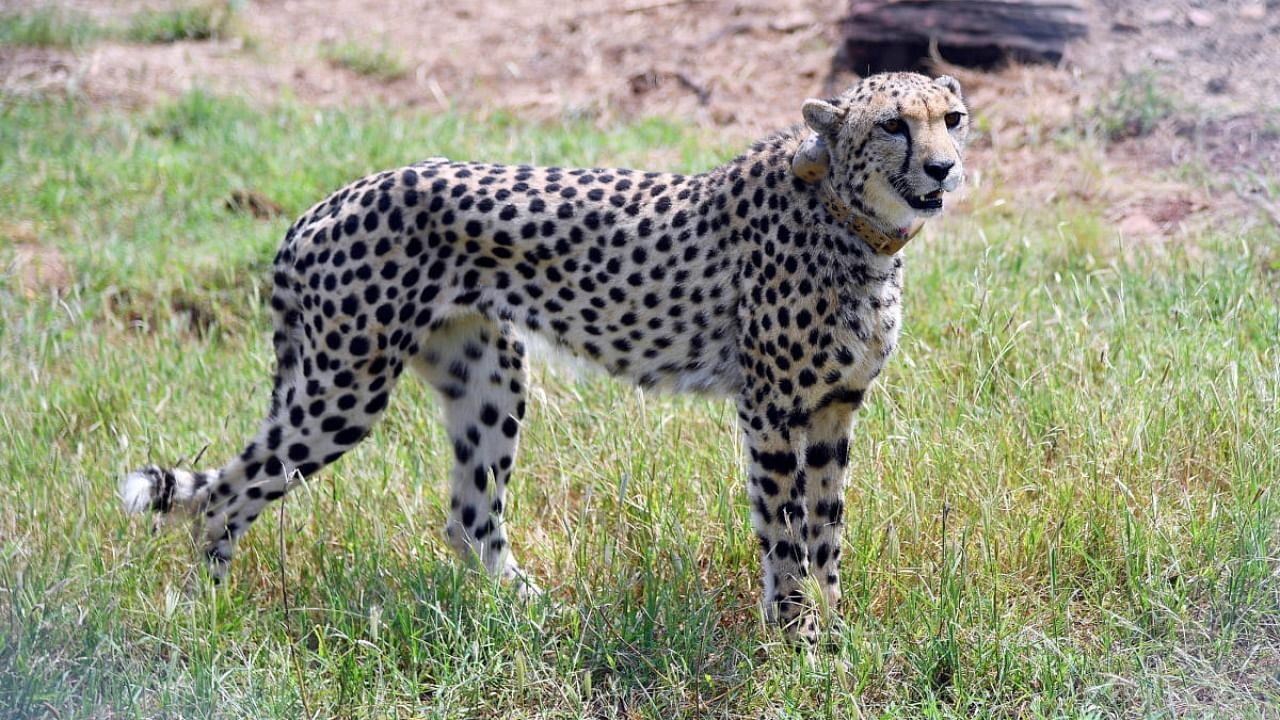
In yet another set back to the cheetah programme, a female cheetah died at Kuno national park on Wednesday taking the toll to sixth among the adult felines imported from Namibia and South Africa, officials said.
The Namibian cheetah Dhatri (Tibilisi) was one of the eight animals that were brought from the African nation a year ago to kick start a programme for repopulating Indian forests with the cats more than seven decades after Asiatic cheetah had become extinct in India.
If one takes the deaths of three out of four India-born cubs on a single day into account, this will be the ninth cheetah death reported from Kuno in little over four months.
“Something has really gone wrong at Kuno. The ninth cheetah death took place this morning. The argument that all these deaths are expected mortality, is complete nonsense and has been debunked by international cheetah experts,” Congress leader and former Union Environment Minister Jairam Ramesh said on Twitter.
“This is what happens when science and transparency take a backseat. This is what happens when one man's vanity and desperate need for self-glory takes over,” he tweeted.
The Union Environment Ministry in a brief statement said there were 14 cheetahs – seven males, six females and one female cub - in the enclosures (boma) whereas two were roaming in the wild as they could not be captured.
Most of the animals were re-captured for health examination after a couple of them died from sepsis, triggered by abrasion under the radio-collar. It was decided to remove their collars and examine their health while keeping them at the enclosures. All but two free-ranging cheetahs were darted and put back in the boma.
According to the ministry sources in South Africa winter immediately follows monsoons because of which cheetahs grow a fair bit of fur. But in India, due to the heat and humidity, insects took hosts in their body and some of the cheetahs died due to that.
Most of the insects were around the neck, and contrary to reports, the reason was not the collars but the scratches due to the insect bites.
The ministry has looked extensively across the country and found five field officers who are going to take over the programme.
The death of Dhatri comes days after the National Tiger Conservation Authority told the Supreme Court that all the mortality at Kuno was due to “natural causes” and none of the cheetahs died due to “unnatural reasons like poaching, snaring, poisoning, road-hits and electrocution.”
“The NTCA has no reason to believe that the mortalities were caused on account of any inherent unsuitability at Kuno,” the authority informed the top court, noting that even in the non-introduced population, the survival rate is just about 50%.
Experts observed that survival of cheetahs when introduced in a landscape was a matter of concern. In the Mozambique cheetah reintroduction, 12 out of the 21 animals died since 2021, but mostly due to snares. Post release monitoring and veterinary care were also poor in Mozambique as compared to Kuno.
